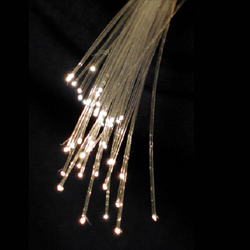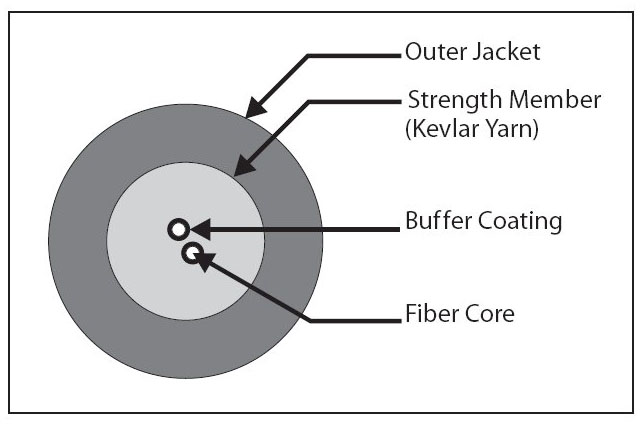
THE PLUS SIDE
There are benefits to using fiber optic rather than copper cable. Some of the most important advantages concern fiber‘s inherently superior dielectric properties. Because optical fiber has no metallic components, it’s unsurpassed for providing complete electrical isolation as well as noise immunity.
Electrical isolation is most important when it comes to eliminating ground loops. A ground loop is a condition where an unintended connection to ground is made through an interfering electrical conductor.
Generally, a ground loop connection exists when an electrical system is connected in more than one way to an electrical ground. Because there is no electrical conduction through fiber cable, equipment grounded at one end of the connection is completely isolated from the ground at the other end.
Ground loops can be an especially irritating source of headaches in even the simplest sound systems and thus, using optical fiber signal transmission can eliminate these major sources of problems – entirely.
Another advantage of optical fiber is its immunity to external noise. Electrical noise, also known as EMI (electromagnetic interference), and RFI (radio frequency interference), are unwanted electrical signals that produce undesirable effects and otherwise disrupt audio and data systems.
Sources of EMI/RFI include lighting equipment, computers, electric motors, and radio and television broadcasts. Fluorescent lights and power lines are a common source of annoying 60 Hz hum. Lightning can also be a common natural source of audio and data system interference and disruption.
The interference from all these sources modifies and interacts with data signals in metal cables, causing data errors and transient unreliability. Even traditional high-quality “balanced” copper cables are susceptible to EMI/RFI and lightning problems.
The low signal attenuation performance and superior signal integrity found in fiber optical systems facilitates much longer runs for signal transmission than metal-based systems. While single-line, voice-grade copper systems require in-line signal repeaters for satisfactory performance over long distances, it’s common for multimode optical systems to extend to two kilometers (km) – about 1.25 miles – or for single-mode fiber systems to reach up to 20 or more km – about 12.5 miles – with no active or passive processing. Emerging technologies for fiber optics promise even greater distances in the future.
Long, continuous lengths and the small diameters of fiber optic cable runs provide numerous advantages for installers and end-users. Since today’s applications require an ever-increasing amount of bandwidth, it is important to consider space constraints.
It ‘s commonplace to install new fiber optic cabling within existing HVAC duct systems. The relatively small diameter and light weight of optical cables makes such installations both easier and practical and also saves valuable electrical conduit space.
System designers typically plan optical systems that will meet growth needs for a 15- to 20-year life span. Although sometimes difficult to predict, potential growth can be accommodated by installing spare fiber cables for future requirements.
Installation of spare fibers today is more economical than installing additional ones later. In addition, with the use of multiplexing technology, additional channels can be carried over the same fiber cable by simply upgrading the hardware at either end.
As bandwidth demands increase rapidly with technological advances, and prices continue to drop, fiber will continue to play a vital role in the long-term success of more reliable AV transport.

